More money, more customers, more popularity. When it comes to business growth, startups want bigger profits and bigger exposure.
But all business is not good business. When it comes to building an audience, a larger audience does not always equate to revenue increases. Targeting people who do not fit your ideal customer profile will drain your bank account and prevent you from building a loyal customer base.
In this guide, we will discuss how to research and gather data to find your target audience and go through the steps to help you hone in on your ideal customers.
What’s in This Guide?
This guide covers the steps to finding your target audience, why it’s beneficial, and what pitfalls can ensue when you target too broad a market. You will learn:
- The drawbacks of marketing without a target audience
- How to define your brand identity
- How to define your products
- How to research your market
- How to find your target audience
- The basics of quantitative and qualitative research
- How to run surveys to get feedback from your customers
- The groups to target your research whether or not you already have customers
The Drawbacks of Marketing Without a Target Audience
Marketers who are not 100% aligned with their targets waste money on excessive advertising because they are more focused on reaching people rather than reaching their ideal customer. Acquiring a healthy marketing ROI without a target audience will feel like an uphill battle. Instead of pre-knowing how your ads will perform, you may waste time and resources “testing” markets instead of focusing on ROI.
If you haven’t defined your target audience, your tone and messaging may also not connect with your audience, even if your product appeals to your demographic.
For example, let’s say you’re targeting entrepreneurs from ages 25 to 40 with your budgeting software because this demographic broadly defines your market. Within that demographic, however, exist many subsets that have different desires, behaviours, and reasons for purchasing (or not purchasing) your product.
Some entrepreneurs may prefer using traditional spreadsheets instead of clunky software. Others might be opposed to using software and instead choose to hand it off to a professional. Still, others might prefer to spend their tight budgets on advertising instead of a tool that seems insignificant to them at the stage of business they are in. These people are technically all “entrepreneurs” and could potentially be your customers, but you still have not yet defined your ideal customers.
Generalised campaigns fall flat. Targeted messaging that appeals to your audience’s preferences, interests, and behaviours will convert better because it connects with people and triggers their need to purchase, eliciting an emotional response. Emotional connections lead to sales. People buy with their hearts, not with their wallets.
Relying on guesswork to randomly choose customer characteristics will also set you up for failure. The key is to find your target audience by consulting real data, not relying on hunches and assumptions.
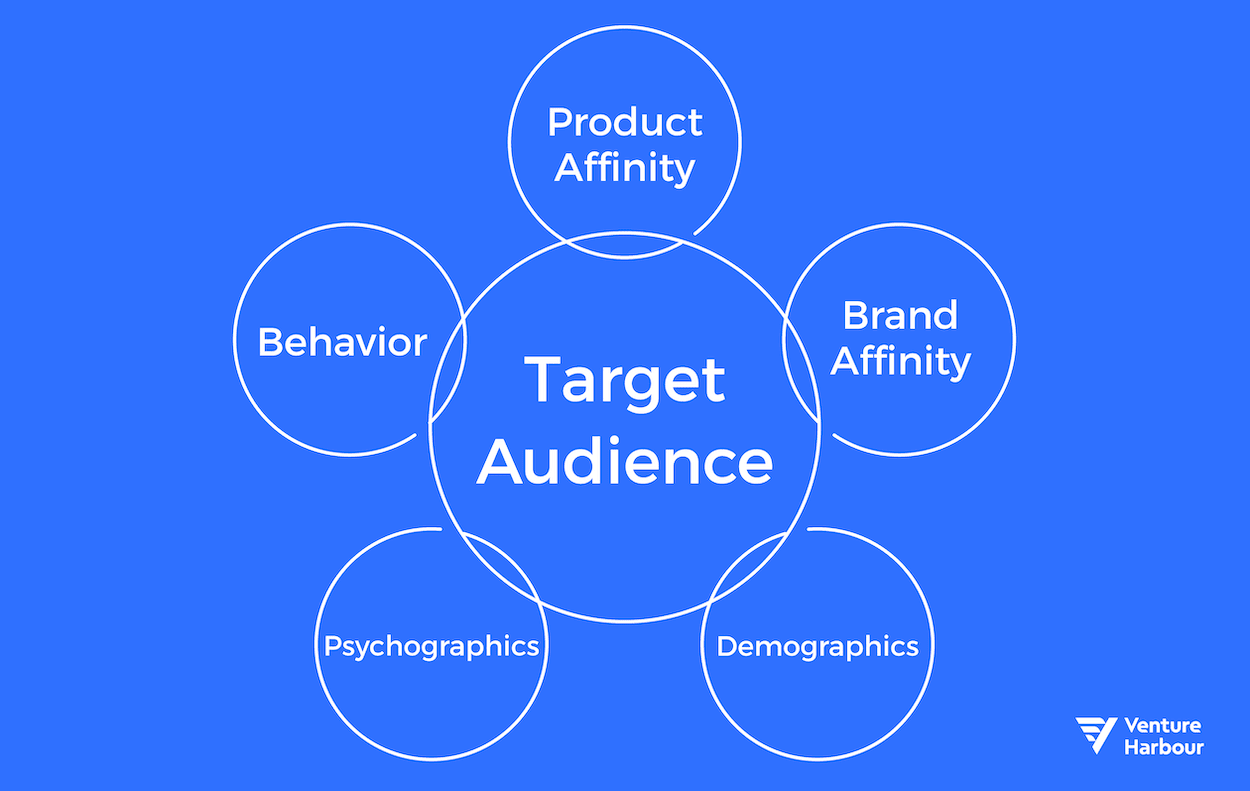
1. Define Your Brand
Why does your business exist? What keeps you motivated to pursue success at all costs? Before you can define your target audience, you need to define your brand and its message, vision, and purpose. If you don’t know who you are, it will be difficult to fully understand the people you want to help and serve.
Have you defined your brand? If not, answer the following questions.
- What is your brand personality and attributes?
- What is your vision for the future of your brand?
- What story are you telling your audience?
- What are your values?
- Why are you in business? What is the purpose behind what you do?
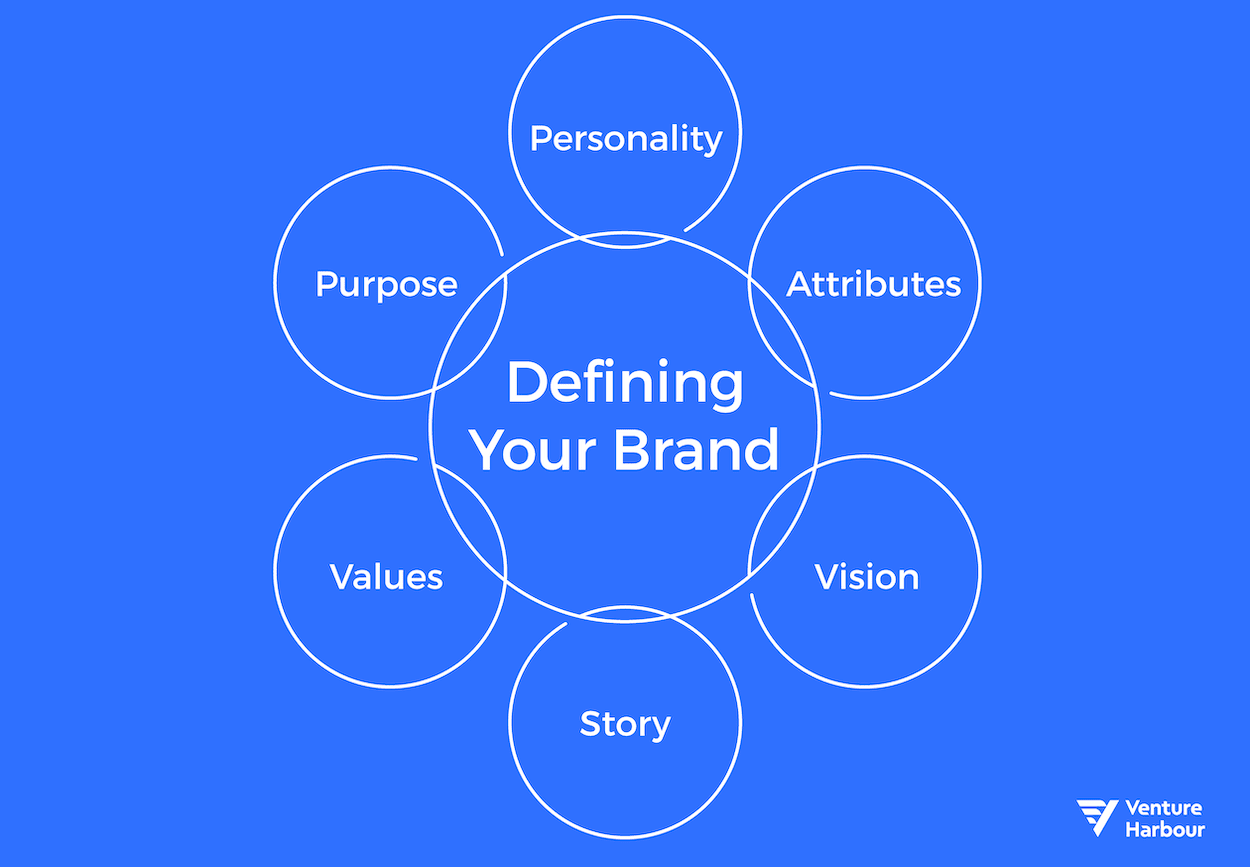
When you have a tight grasp on your brand identity, you can easily identify the people who will naturally have an affinity for your brand, and target them accordingly. Your targets can align with your purpose, which will attract them to your brand. The people who are aligned with your brand will choose you over a competitor (even if you charge more) as 64% of consumers care more about the customer experience than price. Loyal customer connections can influence decisions more than money.
2. Know Your Products
Before you can fully define your target audience, you also must have a firm grasp on your product and how it fulfils your target’s needs.
We can sum up the entirety of targeted marketing in one short sentence: People buy what makes them happy. Your product is really just a problem-solver and a happiness-maker in disguise.
It doesn’t matter if it’s a nail gun, a cup of coffee, or a sophisticated piece of software. Happiness sells. And it’s your job to figure out why your product will make your customers happy.
Follow the steps below to define your product:
- Briefly describe your product (My product automates budgeting for entrepreneurs)
- What problem does your product solve? (My influencer marketing platform enables businesses to locate targeted influencers without scouring the internet and wasting time finding, engaging, and validating potential influencers)
- List your product’s features and benefits. How do these attributes enrich people’s lives? (My app tracks users’ steps so they can follow their progress, making it easy to get fit and healthier.)
Once you have a firm grasp on your product and the problems it solves, you will be ready to adequately research your target audience because you know what questions they have.
3. Define Your Target Market
The first and critical step to defining your target audience is market research. Every decision you make as it relates to your target audience should involve data.
It’s critical that you conduct research, or else you will rely on assumptions and guesses, which will steer you in the wrong direction. The data should be the only entity that speaks and informs your marketing strategy.
Before you start target audience research, ensure you have thoroughly researched your target market. Target audience research involves narrowing down your broad audience to specific groups of people. However, if you start narrowing your audience without understanding your broader market, you may unknowingly focus on the wrong segments.
Let’s say you identified a customer segment for your walking/running app: males who want to train for marathons.
You haven’t considered your broad market, but you know this segment would benefit from using your app. Targeting this segment could prove successful, but the approach is not rock solid. Why? Without knowing your broader market, you may unknowingly abandon other segments that may or may not perform better.
What if males who want to gain endurance or lose weight want to use your app also? When you step back and get a broader sense of your potential market, when it comes time to focus and narrow it down, you will have a higher vantage point from which to segment your customers.
True North CTA
4. Defining Your Target Audience (The Who, What, and How)
Once you define your target market, the broader group of consumers your product targets, it’s time to focus in on your target audience. In this section, we will outline what and how to research your customers, non-customers, and your competition.
What to Research
Before you conduct research, you need to know what you are researching. This information will come in handy when you survey or interview customers as part of your target audience research.
At a minimum, uncover your customers’ basic demographics such as:
- Age
- Gender
- Location
- Employment
- Family status
- Education level
- Income
Demographic data is beneficial, but it doesn’t tell the whole story. Dig deeper to uncover psychographic data on your target audience. Psychographics define a target’s interests, values, and activities. Defining these traits can help you understand the emotional triggers that make your targets behave the way they do.
Here are some questions to answer when digging into customer psychographics:
- Where do they hang out online and offline?
- What social media profiles do they engage on?
- What are their interests outside of work?
- What media do they consume daily?
- What do they like to do in their free time?
- What are their passions?
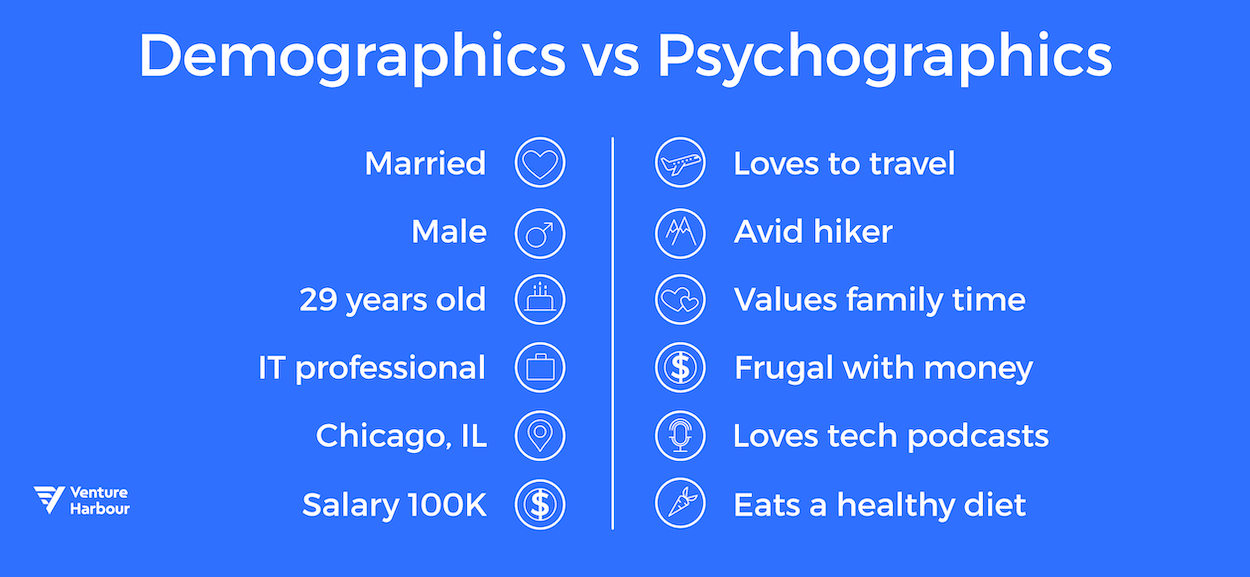
Behavioural and Technographic Data
Behavioural data details why your customers purchase from you and what the trigger is for them to do so. The answers to the below questions will help you identify your target’s behaviours.
- What are their online buying behaviours?
- Where do they spend their money?
- How do they purchase products? Online? Brick and mortar?
- Do they typically join loyalty programs?
- Do they engage with brands on social media?
- Are they repeat buyers?
- Do they analyse a lot before making a purchase?
You can also research technographic data if it applies to your audience. Technographics refers to a target customer’s technology usage and devices.
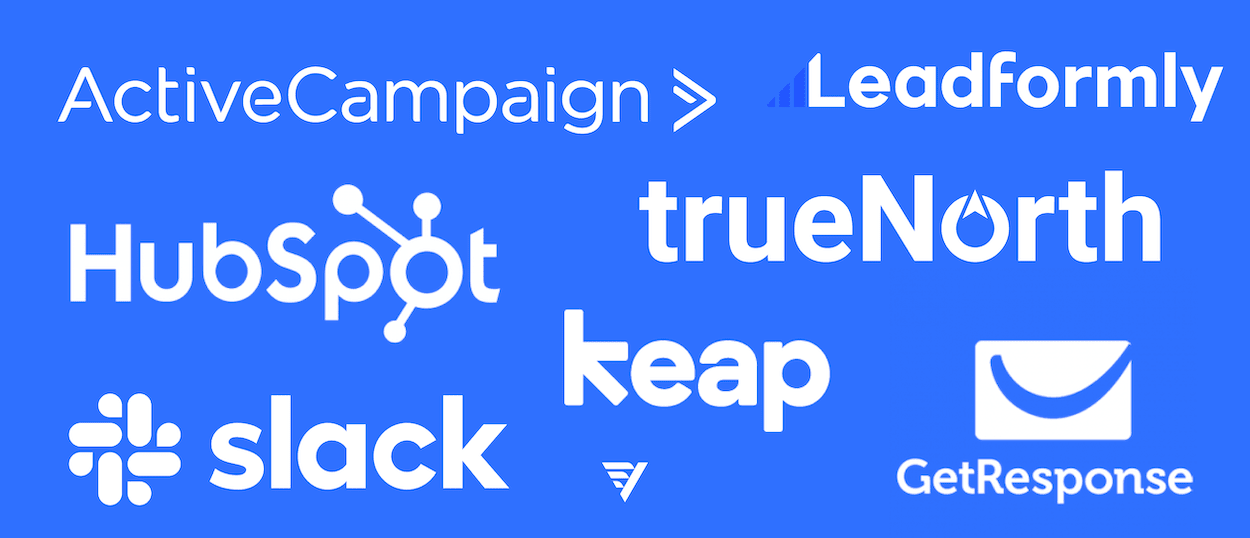
What if my customers fall into more than one target segment? This is normal. You can target more than one segment. The key is to define those segments, so you can tailor your marketing strategy to appease those prospects with stronger, more direct messaging.
How to Research Your Audience
Once you know what data you are looking to collect, it’s time to fire your research cannons.
To keep it simple, we will discuss two types of research: quantitative and qualitative. Marketers can conduct qualitative and quantitative research for many reasons, but in this article, we will focus on research relating to understanding your target audience.
Quantitative research compiles the hard numbers from data sources. It’s the mathematical, more analytical side of market research. The method of analysis is relatively simple because it only requires a look at the numbers and doesn’t leave an inch of room for bias to skew the results. If the numbers are talking, they cannot lie.
When researching your target audience, look at metrics that reveal what ideas, topics and products your audience deems vital. Your quantitative research may involve looking at the following data:
- Website traffic to specific pages (products, blog posts)
- Blog shares and engagement
- Social content shares and engagement
- SERPs (Search engine ranked pages?) clicks
- Ad clicks
- Bounce rate
- Time on site
- Lead conversions
- Sales conversions
While quantitative research is valuable, it doesn’t give us the full picture of our target audience. In fact, it can even lead us astray. For example, from our research, we may discover that a specific demographic engages with a type of content we post on Instagram. But, this gives us only one layer of data. If we don’t know WHY the prospect interacts with a particular piece of content, we can’t truly understand what makes them make purchasing decisions. You need to dig deeper into the data to create the right messaging and increase conversions.
Enter qualitative research.
Quantitative research answers the question, “how much,” while qualitative research answers the question, “why.” Successful qualitative research focuses on people’s emotions and perceptions, and reveals their opinions and why they make decisions. Focus groups, interviews, and surveys are typically the primary drivers of qualitative research.
Surveys
Conduct surveys to poll customers and non-customers about their buying preferences, behaviours, interests and demographics. Surveys reveal what motivates your customers yo buy and will provide data that will help you better define your target audience.
A few tips on sending surveys:
Don’t send surveys to everyone.
While the purpose of the survey is to target a broad enough audience so you can get valuable feedback, you shouldn’t send it to people who would never purchase your product. If you have a general idea of your market, start there. So, for example, let’s say you know you are targeting small business owners who generate at least $5 million in annual revenue with your software app. Instead of sending a survey to all small business owners, send to a more focused market without getting too narrow. Your survey answers will help you narrow down your market.
Offer incentives
Offer participants an incentive to complete your survey. Ensure the incentive is related to your product. If it is a random gift such as a gift card, people will fill out the survey just to get the incentive so you may not get honest answers. If the incentive relates to your product (free coaching, a free month of software usage, product discount), the people it will appeal to are the ones you want taking your survey.
Include demographic, behavioural, and psychographic questions so you can get a well-rounded perspective of your audience.
Keep the survey short and ask more close-ended questions
Don’t overwhelm participants with long surveys or open-ended questions. Open-ended questions require longer answers and will tire your survey participants. Close-ended questions (yes/no, multiple-choice) allow for quick answers and makes for a more painless process for participants. Below is an example of closed- vs open-ended questions:
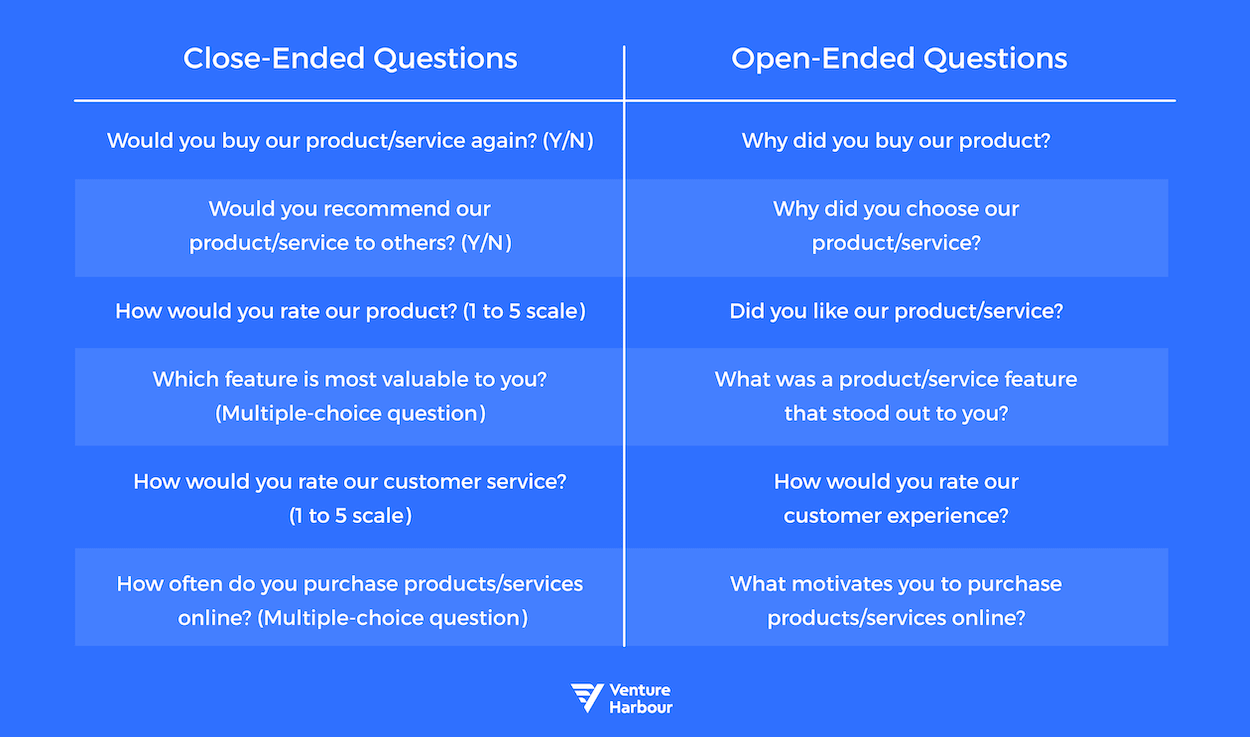
Interviews and focus groups
In addition to surveys, interviews and focus groups are two other research techniques to help you know your audience and get valuable feedback. Focus groups are somewhat expensive but highly beneficial. Interviews allow you to focus on specific subjects and get a little deeper with participants because you can ask questions based on real-time feedback. A handful of great interviews can provide a lot more value, even more than an extensive survey.
Whom to Research
We’ve covered what to research and how to start the process with quantitative and qualitative research. But, before we can really dive in, we need to know whom to study.
Existing customers
What drives your customers to purchase? Why do they buy from you instead of a competitor? Your customer base can provide a goldmine of data. They visited your website, likely engaged with you on social media and purchased your product. Quantitative research allows you to analyse their behaviour on your online properties and discover what resonates with them. Qualitative research will enable you to match customers’ online behaviour with the emotional drivers that fueled that behaviour.
So, for example, in your research, you may have discovered that your customers purchased but do not leave reviews or recommend your product to others. They buy but never become loyal customers. In your surveys or interviews, ask direct questions that can elicit an answer as to why this may be happening. The insight can help you improve your offerings and also understand your target audience better.
Non-customers
Potential customers can also provide treasure troves of data. It’s just as important to understand why customers did NOT buy from you, as it is to know why they purchased. Understanding their decision drivers can help you better understand your target audience.
Gather a sample of people who may have engaged with your brand but never purchased. Send them surveys or request interviews. These people may fall into categories such as:
- Qualified leads
- People who abandoned your cart
- Leads who took a free trial of your software but never purchased
- Leads who frequently visit your pricing page and engage on live chat but never purchase
The data you glean from talking to non-customers will not only help you improve your product and messaging, but it also can help you define your target. For example, maybe you described your ideal customer as a male CEO of a small business, but your research shows that this demographic is not purchasing. You may not be targeting the right crowd and/or your messaging to this segment may not be aligned.
Competition
Who are your competitors targeting? Who are their ideal customers? Learning about your competitors’ target audience can inform your own marketing strategy and provide insight into customer characteristics you may not have noticed before. Here is some information you can research on competitors:
- Their position in the market
- Their marketing strategy
- Their pricing strategy
- Their unique value proposition and their
- What their customers are saying in online reviews and social media
- Where they advertise and what types of ads convert
As you dig into competitive research, jot down information that can help you identify your targets (consumer characteristics, behaviours, preferences). Use this information also to develop creative ways to outperform your competition and solidify your position in your market.
“I Don’t Have Any Customers Yet”
If you just started your business and you don’t yet have sales, finding your target audience is a little more complicated since you don’t have current data to consult. You can still perform research, but instead of surveying your customers, survey potential customers instead. Invite a segment of these people to participate in a survey or interview them directly.
You can also conduct secondary research which entails sorting through third-party information such as chambers of commerce, trade associations, statistics, analyst reports, and competitors. Also, review your social media profiles and email stats and notice who engages with you the most, opens and clicks through your emails. These engagers may be prime candidates for interviews and/or surveys.
Data gleaned from secondary sources is not as forthcoming as customer data, but it can still be valuable. As you gain customers, your data will become more sophisticated, which will allow you to adjust your audience and strategy going forward.
Target Audience Research Never Stops
You will be researching your target audience for as long as you are in business. Your audience will change, your market may expand, your competition will adjust, and you may introduce new products to the market. Your industry will shift and adapt, and your strategy should keep up with it.
Continue to monitor your campaigns and your customers’ behaviours. To simplify your marketing campaigns, True North is a marketing collaboration platform that allows you to identify how campaigns will perform before you launch them. Start, stop and accelerate your campaigns without wasting your budget. Get early access to True North right here and sign up for our beta program.




